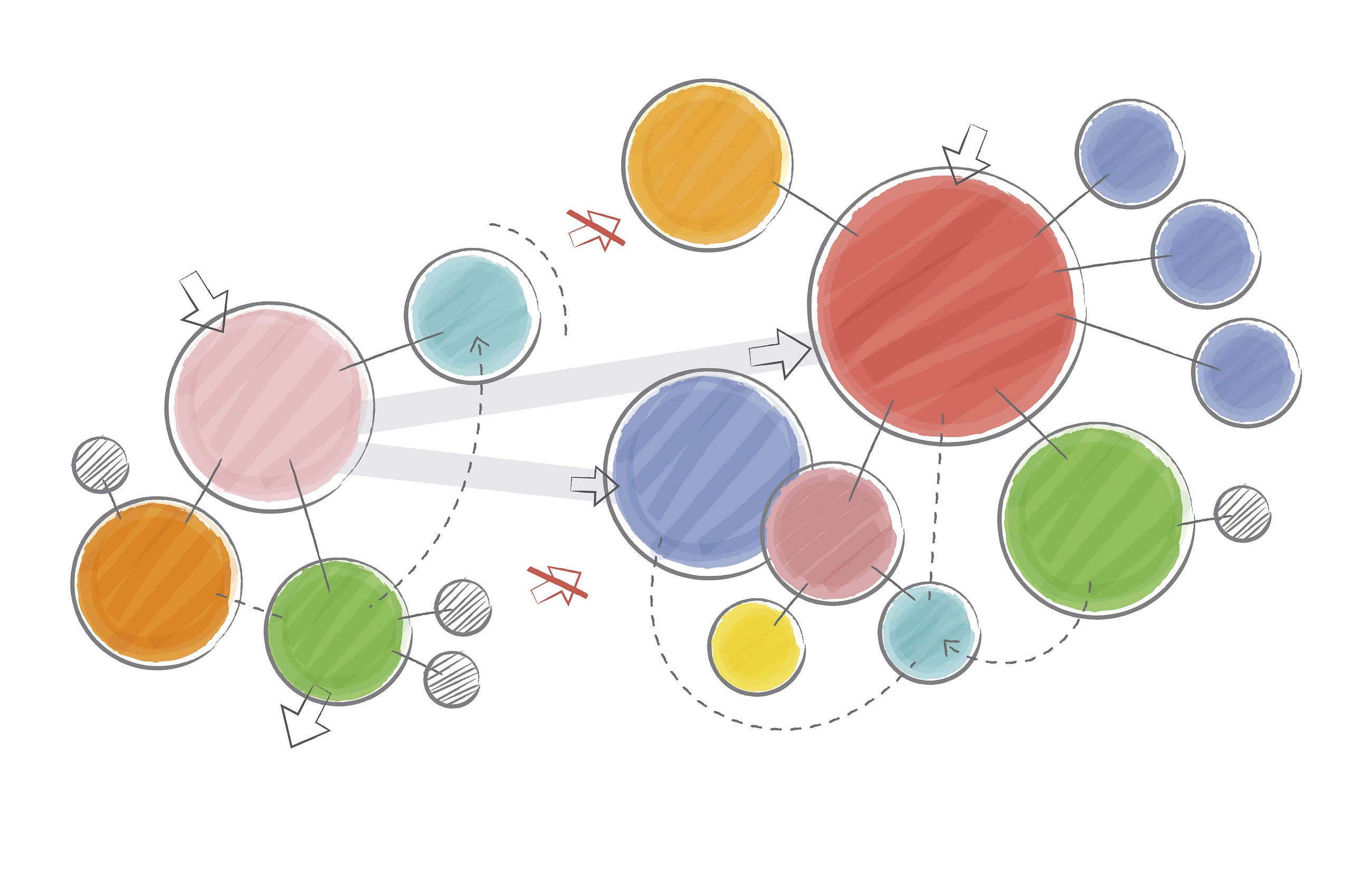Cloud Contact Center: What is it & How Does it Work?
Businesses today operate in a world that revolves around customer experience. As customers’ expectations grow, companies must find ways to meet these demands while keeping their operations efficient and scalable.... The post Cloud Contact Center: What is it & How Does it Work? appeared first on Bigly Sales.

Businesses today operate in a world that revolves around customer experience. As customers’ expectations grow, companies must find ways to meet these demands while keeping their operations efficient and scalable. Enter the cloud contact center—a modern solution that handles customer interactions seamlessly across various channels.
But what exactly is a cloud contact center, and how does it work? This article will dive deep into the subject, offering clear explanations, actionable insights, and a roadmap for adopting this transformative technology.
What is a Cloud Contact Center?
It’s a virtual customer service hub that leverages cloud computing to manage and route customer interactions. Unlike traditional call centers, which rely on physical hardware and on-premise systems, cloud contact centers are hosted online.
This means that a third-party provider manages all the necessary tools and infrastructure, and businesses can access these systems from anywhere with an internet connection.
The primary function of a cloud contact center is to centralize communication across multiple channels such as phone calls, email, live chat, SMS, and even social media platforms.
This centralization enhances efficiency and ensures a consistent and personalized customer experience. This translates to better service delivery, improved customer satisfaction, and reduced business operational costs.
How Does a Cloud Contact Center Work?
To understand how a cloud contact center works, imagine a system that seamlessly connects customers to the right agent at the right time. The entire operation is powered by cloud-based servers and software, eliminating the need for physical equipment like PBX (Private Branch Exchange) systems or extensive IT infrastructure.
When a customer reaches out to a business, the contact center’s intelligent routing system comes into play. Whether the interaction starts via a phone call, an email, or a social media message, the system uses advanced algorithms to direct the query to the most suitable agent. This could be based on factors such as the agent’s skills, language proficiency, or even the customer’s previous interaction history.
Integration with CRM (Customer Relationship Management) systems is another key component of how cloud contact centers work. Agents can access real-time customer data, including past interactions, purchase history, and preferences. This not only helps resolve issues faster but also allows for more personalized communication, leaving customers with a positive impression of the brand.
Why are Cloud Contact Centers Gaining Popularity?
Cloud contact centers are rapidly becoming the preferred choice for businesses of all sizes, and it’s not hard to see why. Traditional call centers have limitations such as high costs, rigid infrastructure, and limited scalability. In contrast, these contact centers offer a range of benefits catering to modern businesses’ needs.
Flexibility is one of the most significant advantages. With a cloud-based system, agents can work from anywhere, whether in an office, at home, or even in different countries. This flexibility is especially valuable for businesses with remote or distributed teams.
Another major factor is cost efficiency. Cloud contact centers operate on a subscription or pay-as-you-go model, eliminating the need for upfront investments in hardware and software. This makes it easier for small and medium-sized businesses to adopt enterprise-grade customer service solutions.
Additionally, cloud contact centers are inherently scalable. Whether a business needs to add more agents during a peak season or scale back during quieter periods, the system can adapt without disruptions. This level of agility is essential for businesses that experience fluctuating customer demand.
Key Features of a Cloud Contact Center
Modern cloud contact centers have features to enhance customer and agent experiences. Let’s explore some of these features in detail:
1. Omnichannel Communication
Cloud contact centers unify all communication channels into a single platform. This means that customers can switch between channels—like moving from an email conversation to a phone call—without repeating their issue.
This seamless experience is a cornerstone of excellent customer service.
2. Real-Time Analytics
These platforms offer powerful analytics tools that track call volume, average handling time, and customer satisfaction scores. Managers can use this data to identify trends, improve agent performance, and make data-driven decisions that benefit the business.
3. Artificial Intelligence and Automation
AI-powered features like chatbots, sentiment analysis, and automated workflows take efficiency to the next level. Chatbots can handle routine inquiries, freeing agents to focus on more complex tasks, while sentiment analysis can help gauge a customer’s mood during interactions.
4. Scalability and Flexibility
Cloud contact centers allow businesses to scale their operations effortlessly. Whether you need to onboard new agents or add more communication channels, the system can adapt without requiring additional hardware or significant investments.
Benefits of Implementing a Cloud Contact Center
The advantages of adopting a cloud contact center go far beyond just cost savings. Here’s how it can transform your business:
Enhanced Customer Experience
A cloud contact center’s ability to deliver personalized and consistent service across channels significantly improves the customer experience. Customers no longer need to repeat their issues; agents can provide faster, more accurate resolutions.
Improved Agent Productivity
Cloud contact centers streamline workflows and eliminate unnecessary tasks by integrating tools like AI and CRM. This allows agents to focus on what matters most: resolving customer issues effectively. Moreover, real-time reporting enables managers to monitor performance and offer targeted coaching.
Business Continuity
Since cloud contact centers are hosted online, they are less vulnerable to disruptions like power outages or natural disasters. Businesses can continue serving customers without interruption, ensuring reliability and trust.
Cost Savings
With no need for physical infrastructure and a flexible pricing model, cloud contact centers are a cost-effective solution. Businesses only pay for what they use, making managing budgets and scale operations easier.
How to Implement a Cloud Contact Center?
If you’re ready to transition to a cloud contact center, here are the key steps to follow:
1. Assess Your Needs
Before selecting a solution, take the time to evaluate your business’s specific requirements. What communication channels do your customers prefer? How many agents will you need? What are integrations (e.g., CRM tools) essential? Answering these questions will help you choose the right platform.
2. Choose the Right Provider
Not all cloud contact center providers are created equal. Look for a vendor with a proven track record, strong security measures, and excellent customer support. Ensure their platform offers the features you need, such as omnichannel support, analytics, and AI tools.
3. Plan the Transition
Migrating to a cloud contact center requires careful planning. Develop a detailed migration strategy, including timelines, agent training programs, and steps for integrating existing tools and data. It’s important to minimize disruptions during this phase.
4. Test and Optimize
Once the system is live, monitor its performance closely. Use analytics to identify any bottlenecks or areas for improvement. Regularly gather feedback from agents and customers to fine-tune the system and ensure it meets your needs.
Challenges and Considerations
While cloud contact centers offer numerous benefits, there are challenges to remember. Data security is a top concern, as customer information is stored online. Ensure that your provider complies with industry standards and implements robust security measures.
Integration can also be complex, especially if you connect the cloud contact center to legacy systems. To address this, work closely with your provider during the setup phase. Finally, remember that transitioning to a cloud-based system requires change management. Invest in training and provide ongoing support to help your team adapt.
Conclusion
Cloud contact centers are more than just a technology upgrade; they represent a paradigm shift in how businesses engage with customers. By offering flexibility, scalability, and enhanced capabilities, they empower companies to deliver exceptional service while staying agile in a competitive market.
Whether you’re a small business looking to improve customer interactions or a large enterprise seeking a scalable solution, a cloud contact center can be the key to long-term success in the digital age.
The post Cloud Contact Center: What is it & How Does it Work? appeared first on Bigly Sales.
What's Your Reaction?
















































































